The Common Blue butterfly (Polyommatus icarus) is the most widely distributed species of blue butterfly across Britain and Ireland, thriving in a broad array of grassy habitats.
The vibrant males are strikingly conspicuous, while the females are more elusive, their presence often hidden from view. The upper wings of the females vary significantly in coloration: in southern England, they are predominantly brown, while in western Ireland and Scotland, they lean more towards a blue hue. However, within local populations, there is considerable variation, and some individuals exhibit strikingly unique color patterns. Unlike the Adonis and Chalkhill Blues, the dark veins of the Common Blue do not extend into the white fringes of the wing margins. Though still widespread, local populations have experienced some declines over time.
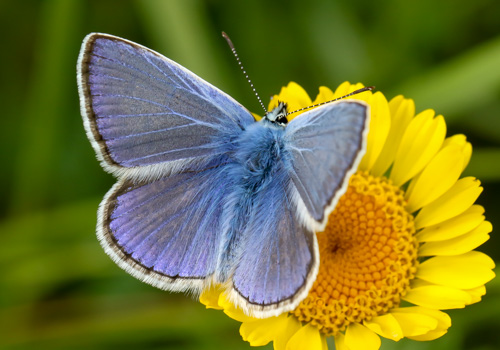

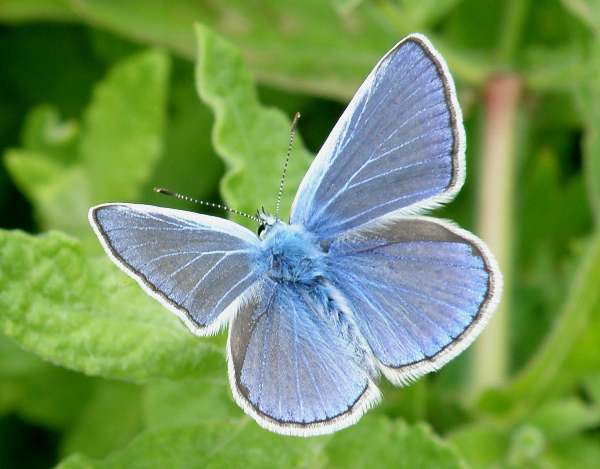
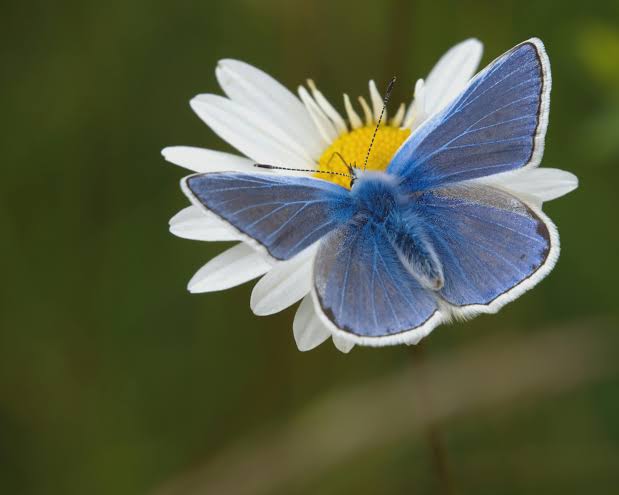
As the name suggests, the Common Blue is the most familiar and abundant blue butterfly found throughout the British Isles. The male’s bright blue wings are a vivid contrast to the more subdued brown wings of the female, which may feature varying degrees of blue. This species is the most widespread member of the Lycaenid family in the region, thriving in a range of environments, including the Orkney Islands. However, it is notably absent from the Shetland Islands and the rugged, mountainous regions of Wales and Scotland. The butterfly forms distinct colonies, typically composed of tens or hundreds of individuals, though some wander over greater distances.
A small butterfly, the Common Blue is active from April to October, flying throughout the summer months. It is found across a variety of habitats, such as heathlands, woodland glades, grassy meadows, parks, expansive gardens, and even neglected wastelands. The caterpillars feed on plants such as clover, restharrow, common bird’s-foot trefoil, and other related species.
Identification
The male Common Blue is easily recognized by its striking, bright blue wings bordered with brown and adorned with a white fringe. In contrast, the female’s wings are predominantly brown, with a dusting of blue near the body. The underside of the hindwings bears orange spots, which distinguish it from the similarly appearing Holly Blue, which has black spots instead. The Common Blue is larger than the Small Blue and the Silver-studded Blue, yet smaller than the rare Large Blue. It is brighter than the Chalkhill Blue and lacks the black-and-white chequered pattern along the wing edges that characterizes the Adonis Blue.
One of the most widespread butterflies across Europe, the Common Blue can be found in diverse habitats, flying across multiple generations throughout the warmer months, typically from March or April to October or even November in southern Europe.
Identification & Similar Species
As a common and adaptable species, the Common Blue often needs to be considered when identifying other blue butterflies. The males have a uniform violet-blue upper side with narrow black borders, lacking andriconal scaling. The fringes of the wings are uniformly white, without any chequering. The underside of the wings features numerous spots, including a characteristic cell spot on the forewing—though this is absent in a small, but significant, percentage of individuals.
A very similar species, the Chapman’s Blue (Polyommatus thersites), can be confused with the Common Blue. It is distinct in that it always lacks the underside forewing cell spot, and the basal area of the upper forewing is rough, covered with andriconal scales.
In recent taxonomic revisions, Polyommatus celina has been classified separately from the Common Blue (P. icarus). This species is marked by marginal spots on the upperside of both wings, though its reliability as a distinguishing feature remains uncertain.

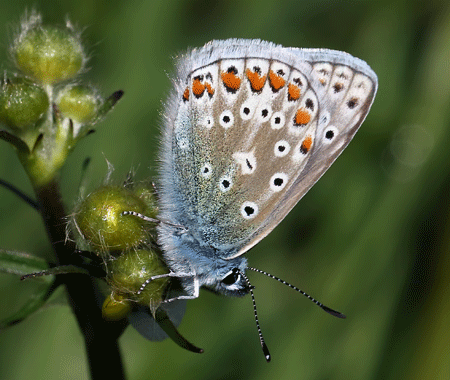
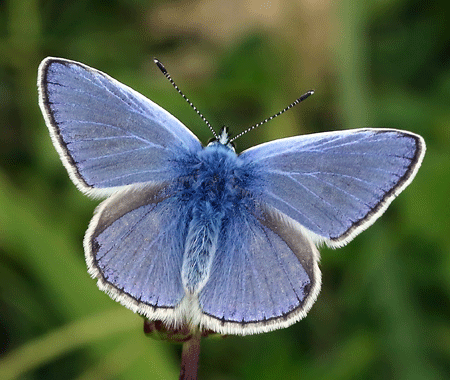
Distribution & Flight
The Common Blue is found across Europe, being replaced by Polyommatus celina in the Canary Islands, North Africa, and possibly southern Spain, as well as some islands in the western Mediterranean. It is an active flyer throughout the warmer months of the year.
Habitat & Behavior
The Common Blue is remarkably adaptable and can be found in a variety of habitats, from warm, sun-soaked meadows to cooler, wooded areas. It thrives at all altitudes, from lowland fields to high alpine meadows, and can be found on all types of soil, whether acidic, alkaline, or neutral. These habitats are typically rich in flowers and grasses, which provide ample food for both the adult butterflies and their caterpillars.
Variation
With such an expansive range, diverse habitats, and multiple generations throughout the year, the Common Blue exhibits considerable variation in appearance. The underside of the wings shows great variability, making identification difficult in some cases. The females, too, are highly variable, with the extent of blue on their upperwings ranging from almost none to nearly complete coverage. Some females may display bold and extensive orange-white spots along the submarginal edge of the wings.
In particularly hot and dry environments, smaller individuals are often encountered, likely a result of the extreme weather conditions during the summer months.
